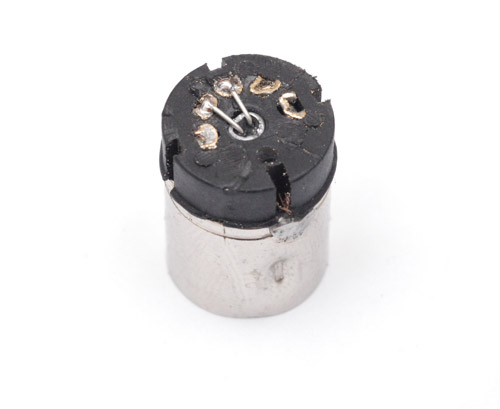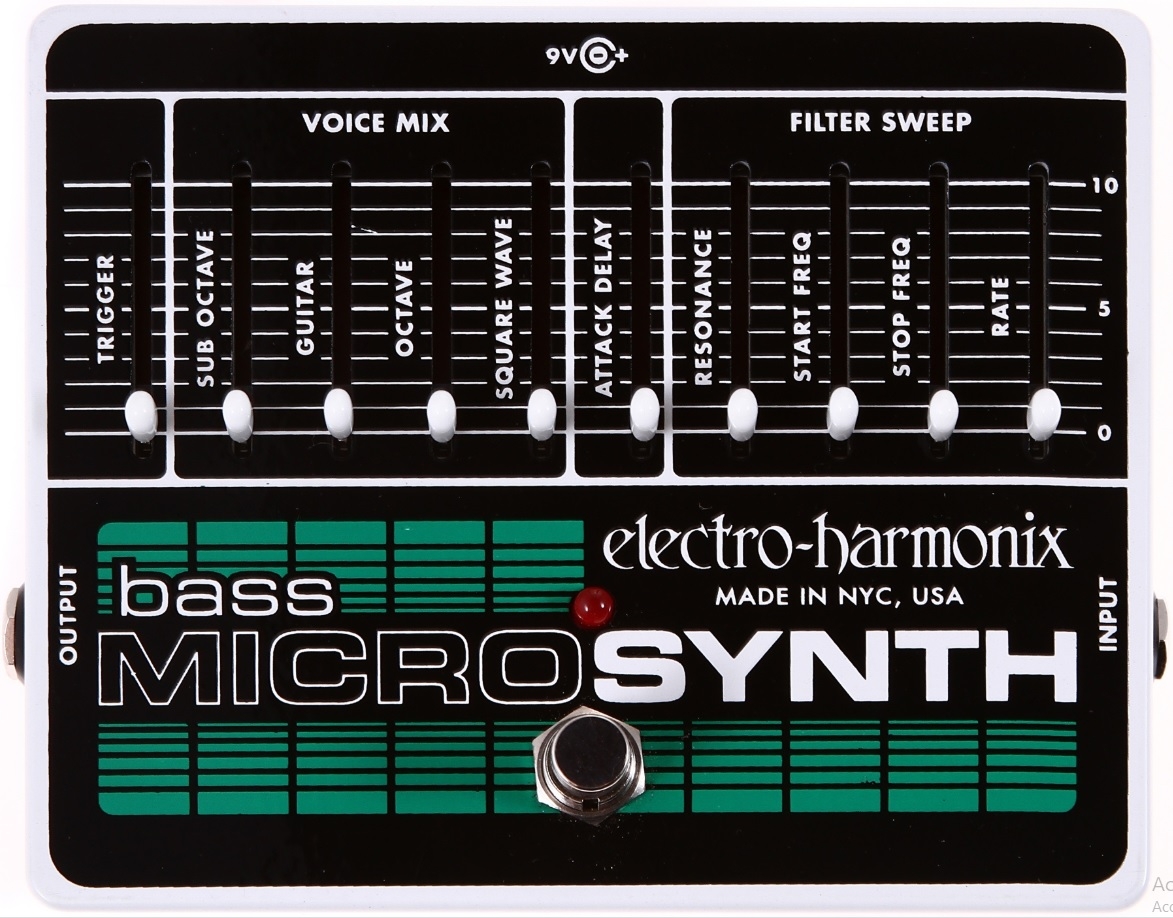

I think you can find these pedals on the use market pretty easily. Which is fairly more cosmetic than internally changed. This particular model has been discontinued and now replaced with a newer modern one. For me it was a bit bulky in size and not very user friendly. If you are a bass player you could very well like this pedal. I ended up getting rid or it fairly quickly. Most of the Electro Harmonics pedals are very easy to use and pretty self explanatory. That is a bit of a deterrent for me as I like things to be easily laid out and simple. I was more used to delay and distortion boxes.įor me there are way to many control knobs that need to be tweaked in order to get a decent modulation. The control were a bit confusing to me because at the time I was not all that familiar with synth pedals and how they operated. I never really could dial in a tone that I liked. I had used this pedal with a Rickenback bass and a SWR bass amp.
#EH MICROSYNTH TRIGGER FULL#
Start, stop filter frequency sliders with adjustable rate for full control over the filter's sweep direction and speedĪdjustable attack time control for fading-in notes Square wave voice can be used as a distortion tone I had used this pedal with my rig for a while but found that I really didn't prefer the overall tone that was inherent in this pedal.Ĥ Voice mixer section mixes: sub octave, original, octave up and square wave Not a dominant effects modulation but rather an accompaniment type tone. It has in my opinion a very sublte tone to it. The bass synthesizer has been an extremely used effects pedal for many bass players. This company I believe started in the 70's with several high quality distortion and effects pedals that were used world wide by many touring and amateur musicians. This is a company that has been an industry standard when it comes to high quality guitar and bass effects pedals. Fuzz, envelope filter, octave above and below and attack delay let you satisfy your inner keyboard bass player. If you like far out bass effects, the EH Bass MicroSynthesizer offers several in one handy unit. Sliders seem prone to damage from a misplaced attempt to stomp on the toggle switch.

Well made, but maybe not as heavy as you would like on a stompbox. A remote on/off would be nice so you could keep the unit at waist level to adjust settings for on-the-fly changes.
#EH MICROSYNTH TRIGGER FREE#
It's also a pain to have to either put the unit on a pedalboard and stoop over to adjust settings or mount it high and try to turn it on and off with your free hand. It's also possible to get delayed attack that's approximates a volume pedal by ramping up Attack delay slider. Octave effects work only on single notes but track well, and the ability to have a octave about' the actual note helps to flesh out the sound - like Hendrix on bass! I'm a fan of controlled fuzz, the this machine delivers a square wave that is very smooth. Uisng the sliders, which determine effect volume, filter cutoff, sensitivity and initial attack time, you can tailor several sounds to your preferences. The Bass Microsynthesizer offers sveral pedals in one: fuzz, envelope filter, octave box and more. I tried out a friend's after hearing Nate Query of The Decemberists using one on 'The Hazards of Love.' Street price is $279. EH recommends that you don't try to power the unit in a chain from a single (V power source, but use the dedicated AC Adapter - wise advise. 10 sliders for Trigger, Voice Mix, Attack Delay and Filter Sweep. Quote from: FUZZZZzzzz on January 13, 2019, 11:34:03 AM something maybe completely off topic:The EH Bass MicroSynthesizer is packaged in a black aluminum thinline box with green and black applied graphics for settings and logo. Guitarist Jimmy Page used a Micro Synthesizer on Led Zeppelin’s recording of “No Quarter”. It was dubbed “The Micro Synthesizer”, the first stomp box synthesizer for guitar.

Within a month, we had a working prototype that featured a combination of a unique touch sensitive fuzz, a sweeping graphic equalizer, upper and lower octave generator, and an envelope follower with variable attack/decay settings. Working with C0ckrell, we devised a method to modify and shape an analog guitar signal to make it generate “other worldly” guitar sounds. Mathews opted to develop an all analog “stomp box synthesizer” and teamed me with his chief engineer David C0ckrell, a former electronics expert for the British Navy. In 1977, when I returned to New York in between trips, Mathews expressed an interest in developing the 6 Channel Pickup system to drive a guitar synthesizer, but it proved to be too inconvenient.


 0 kommentar(er)
0 kommentar(er)
